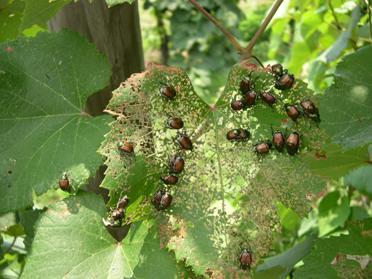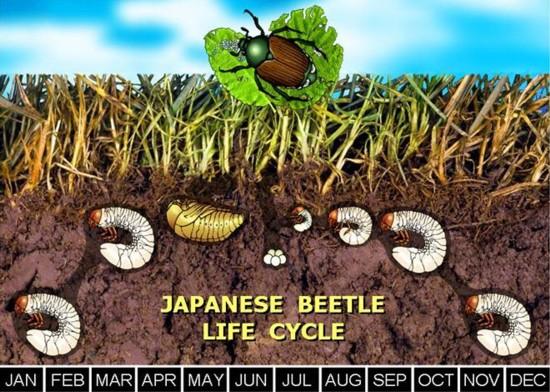Japanese Beetles
go.ncsu.edu/readext?869424
en Español / em Português
El inglés es el idioma de control de esta página. En la medida en que haya algún conflicto entre la traducción al inglés y la traducción, el inglés prevalece.
Al hacer clic en el enlace de traducción se activa un servicio de traducción gratuito para convertir la página al español. Al igual que con cualquier traducción por Internet, la conversión no es sensible al contexto y puede que no traduzca el texto en su significado original. NC State Extension no garantiza la exactitud del texto traducido. Por favor, tenga en cuenta que algunas aplicaciones y/o servicios pueden no funcionar como se espera cuando se traducen.
Português
Inglês é o idioma de controle desta página. Na medida que haja algum conflito entre o texto original em Inglês e a tradução, o Inglês prevalece.
Ao clicar no link de tradução, um serviço gratuito de tradução será ativado para converter a página para o Português. Como em qualquer tradução pela internet, a conversão não é sensivel ao contexto e pode não ocorrer a tradução para o significado orginal. O serviço de Extensão da Carolina do Norte (NC State Extension) não garante a exatidão do texto traduzido. Por favor, observe que algumas funções ou serviços podem não funcionar como esperado após a tradução.
English
English is the controlling language of this page. To the extent there is any conflict between the English text and the translation, English controls.
Clicking on the translation link activates a free translation service to convert the page to Spanish. As with any Internet translation, the conversion is not context-sensitive and may not translate the text to its original meaning. NC State Extension does not guarantee the accuracy of the translated text. Please note that some applications and/or services may not function as expected when translated.
Collapse ▲Japanese Beetles are an invasive species, and are starting to make their appearance. You may be able to reduce the population that appears simply by catching the Japanese Beetles when they first appear. They send out aggregation and sexual pheromones to attract more beetles. You can start management when they first appear, by hand-picking or trapping the beetles.
Hand-picking is an option that is easy for homeowners to do. Just go out early in the morning and place a container that has soapy water in it underneath the area where the beetles are. They tend to drop off the plant when disturbed, so if you start to pick them off, they will drop into the soapy water and drown. If you can hand-pick the first few that appear, you may be able to reduce the number of others that may show up.
Trapping is another option. Some folks often get wrong because they place the trap near the plant or plants they want to protect. Place the traps away from the plants you want to protect so that you draw the beetles away from them. The bags that come with the traps can fill up in a day, so you will have to empty them on a regular basis for the next few weeks. Be aware that if you live in the rural parts of the county where there are pastures, the beetles will be attracted to the traps and you may have more than if you did not use the traps at all.
The damage done to foliage and flowers of ornamental plants is mostly aesthetic, though there are insecticides that can be used. If you choose to use an insecticide, be sure to read and follow the label directions and take all precautions to protect beneficial insects and pollinators.
The most susceptible life stage of the Japanese beetle is the newly hatched grub in the soil. The adults mate and females lay their eggs in the soil in grassy areas. These eggs hatch late July into August and are small and close to the soil surface. This is when they are easiest to control. You can use an organic product, called Milky Spore, which is a naturally occurring bacteria that will infect and kill the young grubs. There are also chemical insecticides that can be used, again timing is when those newly hatched grubs are small and close to the soil surface.
Observe which plants in your landscape that may be susceptible to the Japanese Beetle adults. Take note and consider replacing those plants in the future with ones that may not be preferred by the Japanese beetle.






